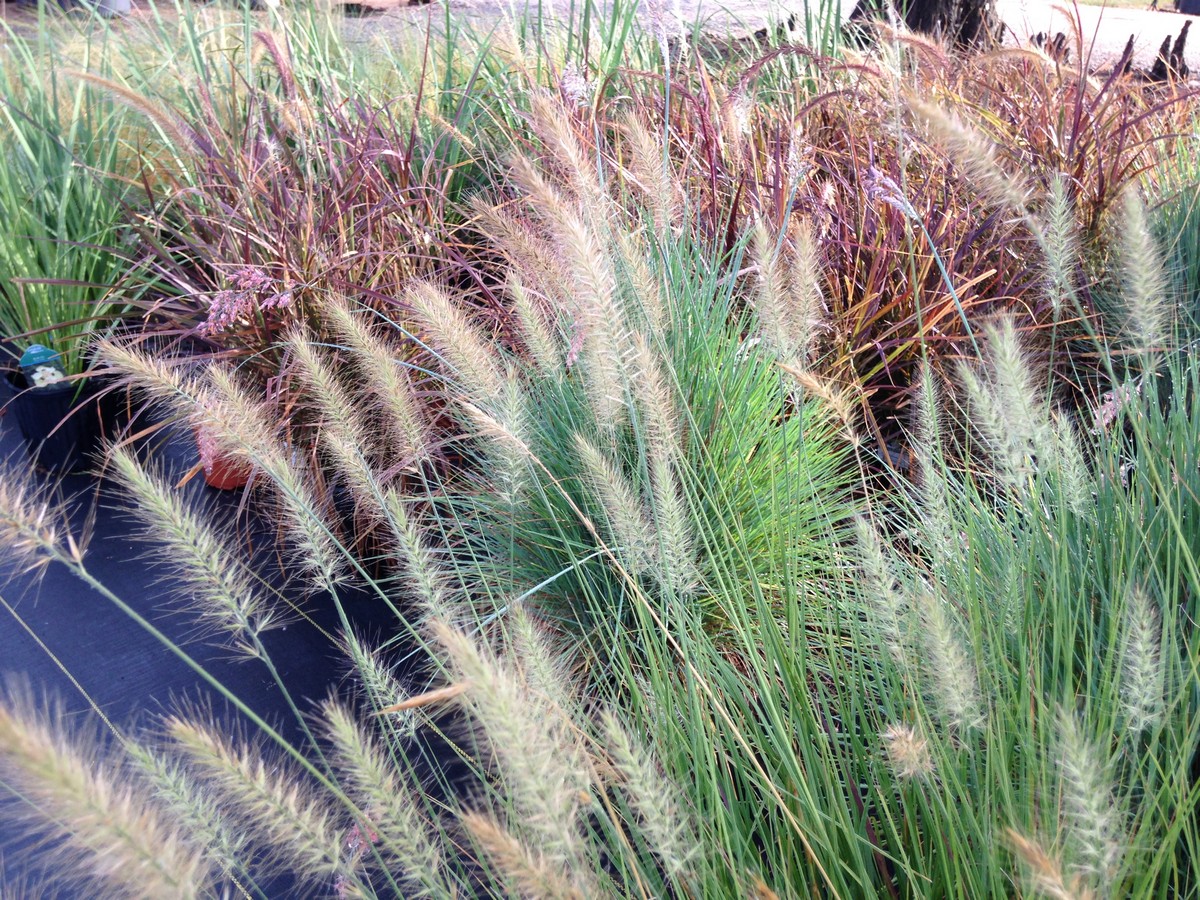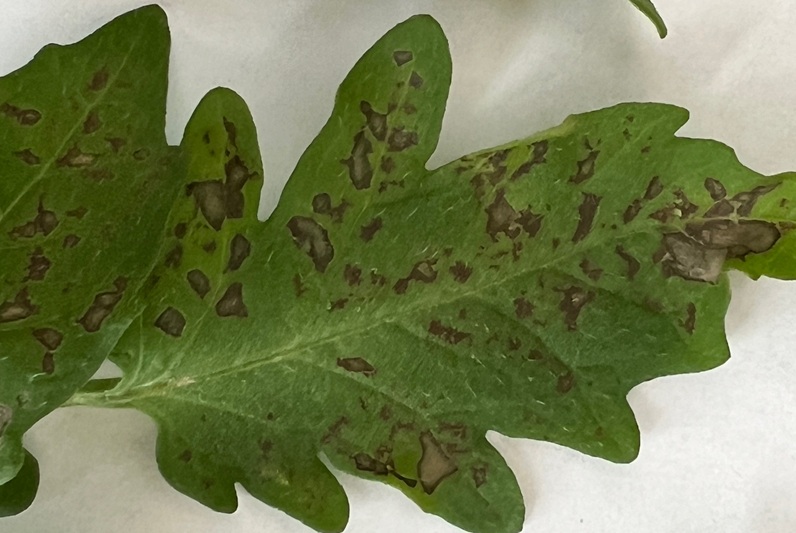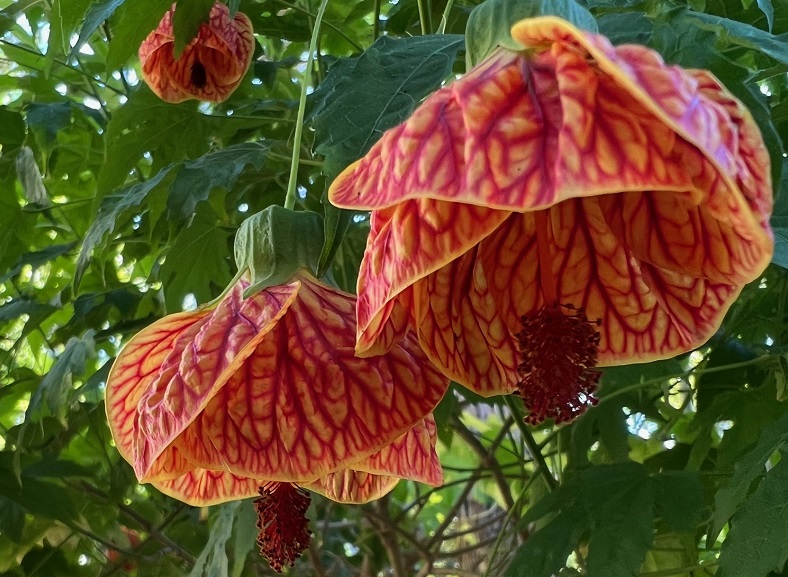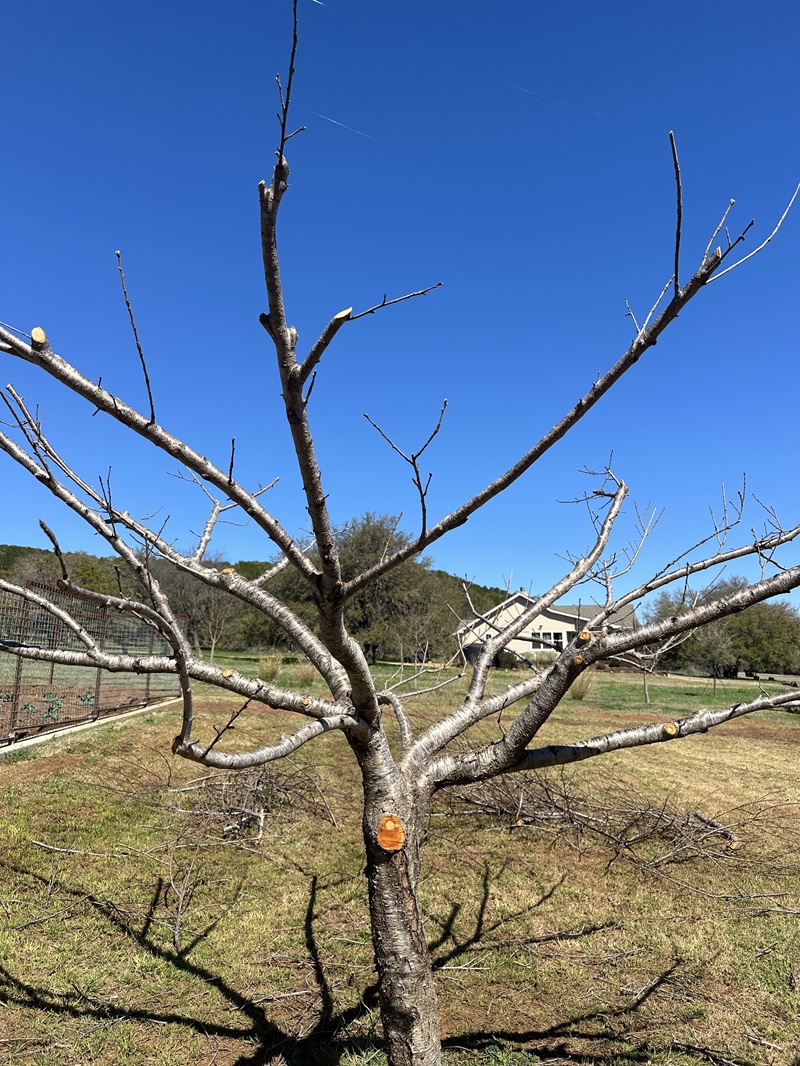Ornamental grasses are overlooked too often. A balanced landscape requires many elements, and ornamental grasses are a great choice to fill the need for a structural variation in foliage. While everyone loves the plants that give us color, we also need to “break up” the landscape to avoid monotony, and give texture to our plantings.
We have a wonderful selection of native ornamental grasses available to us, and not only do they fill a design void, but they are often quite heat and drought tolerant as well. Even when dormant in winter, grasses add structural aspects and interest to the garden. Wait until late February to cut them back, and you will be able to enjoy them all winter!
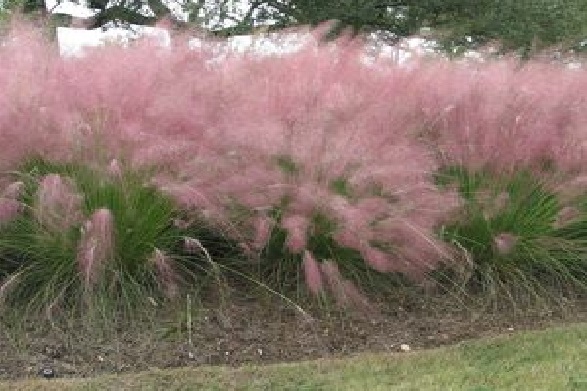
Gulf Coast Muhly (aka Pink Muhly) Muhlenbergia capillaris
When this Muhly grass throws up its purplish-pink plumes in the fall, everyone comments on how striking it is! This sun to semi-shade tolerant grass will grow to 3’ x 3’, and in a mild winter may even remain evergreen (you will still want to cut it back in late February). The wispy seed heads provide a colorful contrast at a time that other plants are finishing up their bloom cycle. Plant with other fall-bloomers such as Mexican Bush Sage and Copper Canyon Daisy for a new look to your garden in the fall.
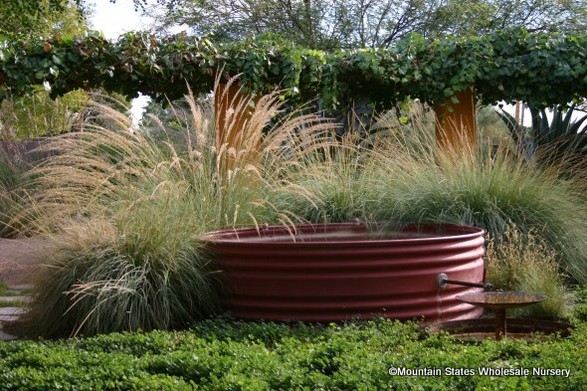
Big Muhly (aka Lindheimer’s Muhly) Muhlenbergia lindheimeri
Summer blooming Big Muhly grows 3-4’ x 3-4’, and throws up white vertical plumes on a 6’ stalk. A clumping blue-green grass, it will also give a nice color contrast in the landscape. It does well in full sun, and is quite drought-tolerant once established. Plant with Texas Mountain Laurels and Texas Sage for a native look in the landscape.
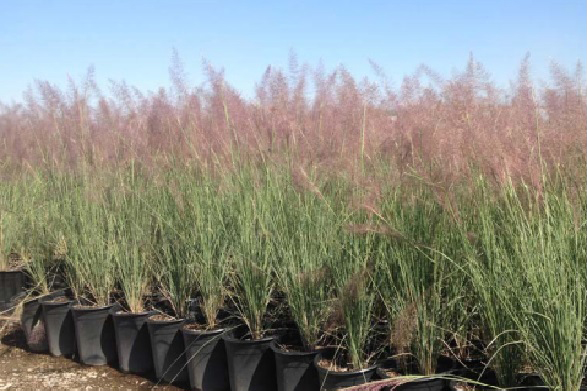
Pink Flamingo Muhly Muhlenbergia x ‘Pink Flamingo’
Just when you thought you’d heard it all! This hybrid progeny of Pink Muhly and Big Muhly combines the best of both parents! It retains the strong vertical form and blue-green leaves of Big Muhly with dramatic arching plumes of soft pink blooms in the fall from its Pink Muhly parent. A narrow upright form, growing to 4-5’ tall and only 2’ wide, it is ideal for narrow spaces.
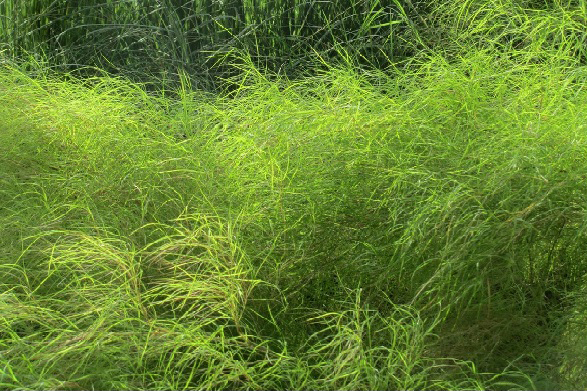
Bamboo Muhly Muhlenbergia dumosa
This fine textured grass grows to 6’ tall and 4’- 5’ wide. When planted in mass this grass flow like waves in the wind. Bright green in color with a wispy texture, it adds contrast to the landscape. The name bamboo comes from the segmented stems, and textural resemblance to bamboo, but it is NOT invasive! It is often evergreen in our climate, but looks best if cut back in late February to regrow new foliage each year.
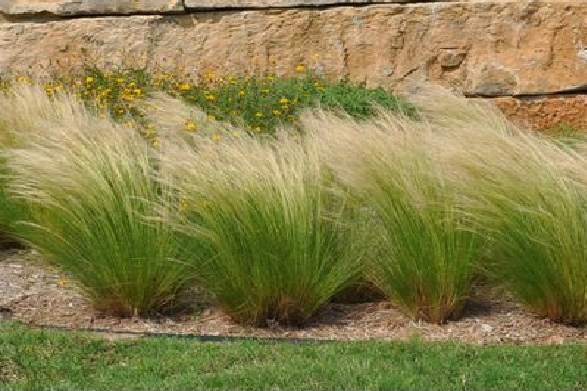
Mexican Feather Grass Stipa tenuissima or Nasella tennuis.
Growing only 1’-2’ tall, this summer blooming grass will grow in full to part sun. The golden seed heads rise above the bright green foliage, and look striking in mass plantings. This grass requires good drainage, and has been known to self-seed readily. Cut back in late February to remove dormant foliage and dried seed heads.
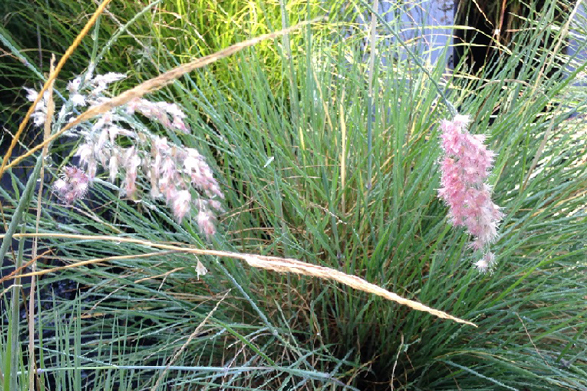
Ruby Crystal Grass (aka Savannah Grass) Rhychelytrum repens or R. roseum
Introduced from S. Africa, this warm season grass has blue-green foliage and grows to 1’-1 ½’ tall. The flowers are airy rose-pink panicles that emerge as early as May in mild climates and bloom until late summer. Usually a Zone 9 plant, it will probably be killed at 15 degrees F. Plant on a south-facing exposure for increased winter protection. Readily reseeds. An excellent addition to a summer garden!
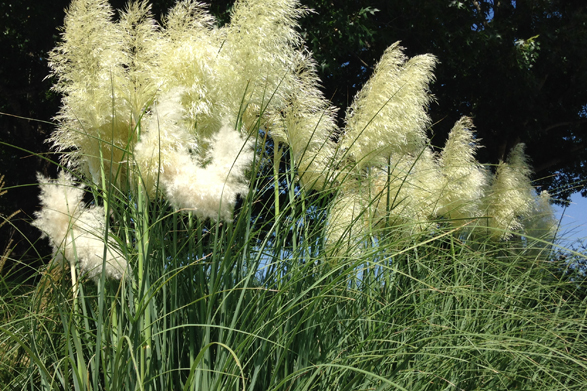
Dwarf Pampas Grass Cortaderia selloana ‘Pumila’
Smaller than “regular” Pampas Grass, Dwarf Pampas Grass will grow to 4’-6’ tall and wide. Propagated vegetatively from a female plant, the all-female flowers form creamy-white spikes in August through frost. Unlike Pampas Grass, this smaller variety remains evergreen most winters. It may be trimmed back with a blade or a weed-trimmer in late February if necessary.
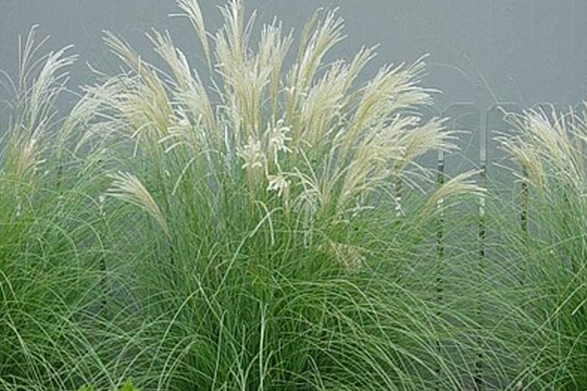
‘Adagio’ Maiden Grass Miscanthus sinensis ‘Adagio’
A dwarf variety of Maiden Grass, this compact grass grows to 2’ tall. The summer flowers emerge pink, becoming white as they mature. An attractive grass for small areas.
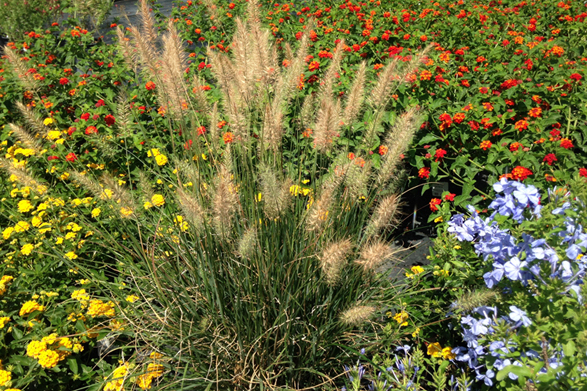
‘Hameln’ Dwarf Fountain Grass Pennisetum alopecuroides ‘Hameln’
This dwarf grass grows to 3’ x 3’ in mounding clumps. Summer blooms are white plumes 3”-4” long. This grass requires cold winters and is not recommended south of Zone 8. A soft looking accent to the landscape.
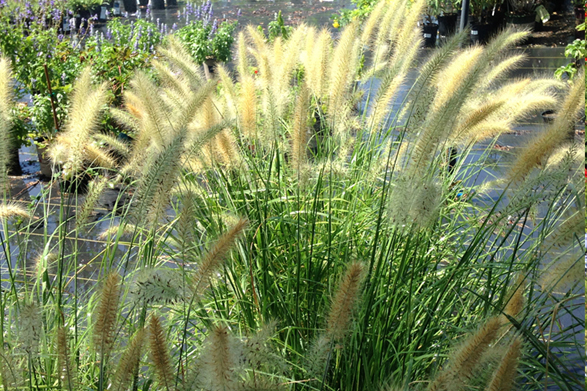
Cassian Dwarf Fountain Grass Pennisetum alopecuroides ‘Cassian’
Profuse, creamy white flowers cover this compact grass in the summer. Drought tolerant once established, this grass will stay about 3′ x 2-3′. Hardy from Zones 5-9, this grass performs well in our area.

Purple Fountain Grass Pennisetum setaceum ‘Rubrum’
This grass has become one of the most popular ornamental grasses in the U.S. Used as an annual north of Zone 9, purple-leaved Fountain Grass is usually used as an accent in the landscape. Purple foliage arches 4’ tall, with flowers emerging in June as reddish-purple plumes. Plant in well-drained soil in full sun. It will tolerate poor soils as long a water is readily available.
These are a few of the many worthy grasses to include in your landscape. I hope this list has given you some options of useful grasses to pair with your shrubs and perennials to create a visual array of color, texture, form and contrast!

